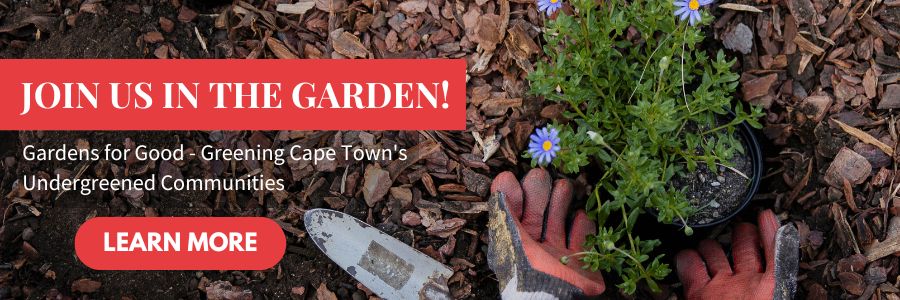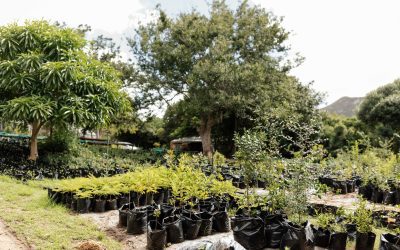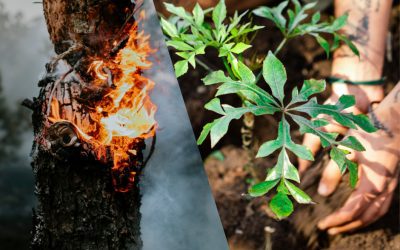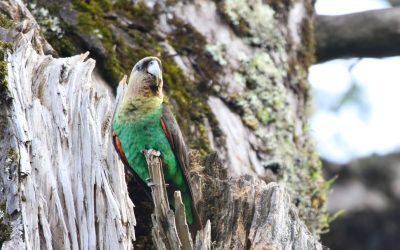Herbal Medicine: The Healing Power of Plants
13
FEBRUARY, 2023
By Pauline Bautista
Our age of technology seeks to improve our health through pharmaceutical medicine. But the pathways to healing our bodies and minds are closer than many people realize. Medicinal plants are found everywhere in nature and are accessible to everyone. Read more on how the practice of herbalism has the power to deepen our connection with our natural environment.
What is herbalism?
Herbalism is the practice and use of medicinal plants for a variety of purposes. Around 80% of the world’s population uses herbal medicine. For millions of people, these plants are also the first approach to healthcare. Throughout history, people have been using plant based medicine to improve the holistic health of their mind, body and spirit. The diverse ways of practicing herbal medicine are adopted from indigenous communities, who have traditionally and continuously worked with medicinal plants.

Herbal medicine has been and continues to be used in many cultures in various ways from religious ceremonies to medical treatment.
The History of Herbalism and Its Practices
Before the development of modern drugs, people relied on nature as medicine. Plants like yarrow, birch tree, and mallow were used as herbal medicine in prehistoric times and continue to be used for certain illnesses today. The medicinal properties of these plants have made their way into today’s medicine, such as pain relievers and antiseptic creams. In fact, around 40% of pharmaceutical drugs are derived from plants. Herbal medicine can take various forms from pills and powders, to liquids, and can be practiced in many ways such as:
- Ingested as tinctures and capsules
- Brewed as a tea
- Applied to the skin through lotions, creams, and body oils
- Crushed into a paste or powder
In many cultures, herbal medicine has also been used in spiritual and religious rituals. An example is the practice of smudging – a tradition in many indigenous cultures, which involves the cleansing of the soul and physical spaces through the burning of sacred herbs (eg. palo santo and sage).
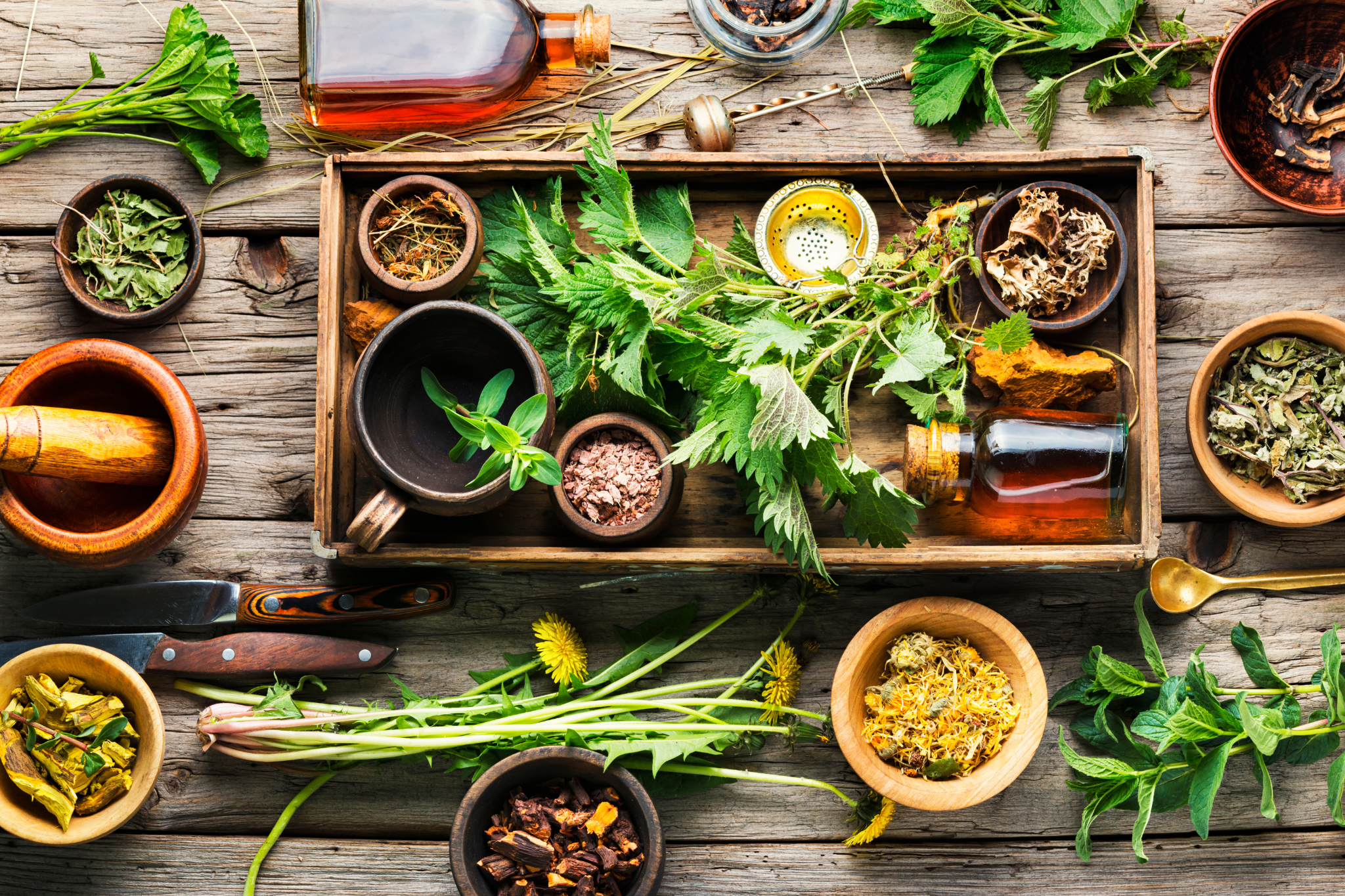
Medicinal herbs have been used throughout history for cooking, drinks and body oils.
Common Medicinal Herbs in South Africa
Plant medicine is found everywhere. For many people, herbalism serves as an accessible and affordable type of healthcare and is a primary source of livelihood for certain populations.
Plant medicine is found everywhere. For many people, herbalism serves as an accessible and affordable type of healthcare and is a primary source of livelihood for certain populations. Common medicinal herbs (and their traditional uses) that are widespread in South Africa include:
- African wormwood: stimulates digestion, and alleviates liver and gallbladder issues
- Wild rosemary: soothes coughs and colds
- Aloe ferox (cape aloe): treats diabetes and various skin conditions such as eczema
- Spekboom: alleviates dehydration, mouth infections, and skin wounds (such as insect stings and sunburns)
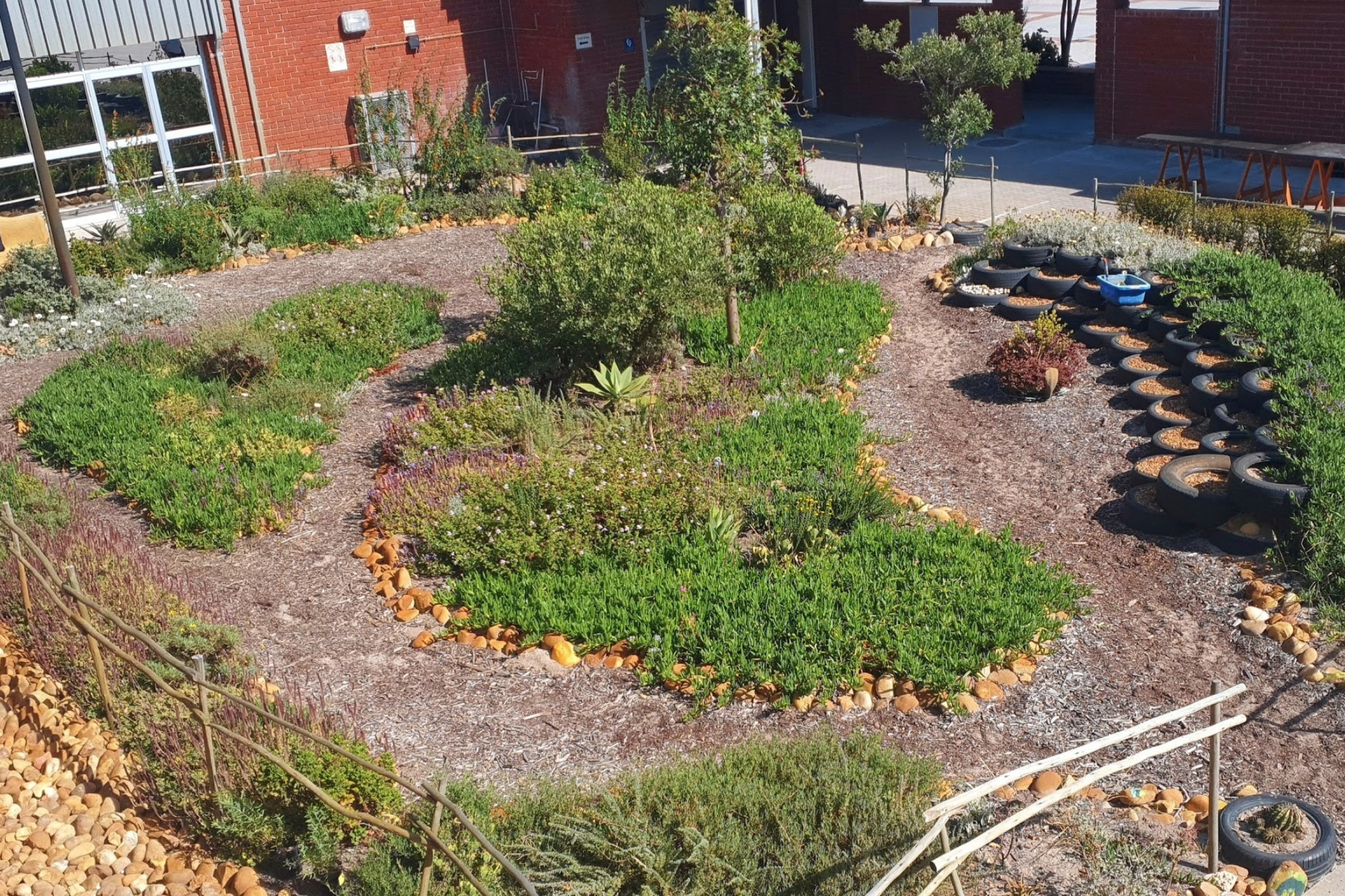
Our Fynbos for the Future garden at West Riding Primary. Photographer: Marlena Niedl
Traditional Medicinal Uses of Fynbos
The fynbos may be the smallest floral kingdom in the world, but it is packed with healing properties! The Khoisan were the earliest people to use fynbos as medicine and their indigenous knowledge and traditions of these plants continue to be practiced today. Here are a few examples of the traditional healing uses of fynbos:
- Buchu: treats inflammation, kidney, and urinary tract infections
- Wild dagga: soothes eczema, rashes, colds, and coughs
- Rooibos: relieves stress and inflammation, as well as supports digestion
- Honeybush: reduces inflammation, coughs, and symptoms of menopause
- Wild fig: treats various skin conditions such as jellyfish stings, eczema and ringworm
The Importance of Indigenous and Traditional Knowledge
Indigenous communities play a significant role in our awareness of herbal medicine. Their well-established connection to the natural world produces immense knowledge on how to care for our local environments. Indigenous knowledge (also known as traditional ecological knowledge) involves the oral and written traditions, beliefs, and practices of indigenous and local people that have been acquired over thousands of years while promoting environmental protection over our natural landscapes. Many indigenous peoples continue to practice herbalism for traditional and medicinal purposes today.
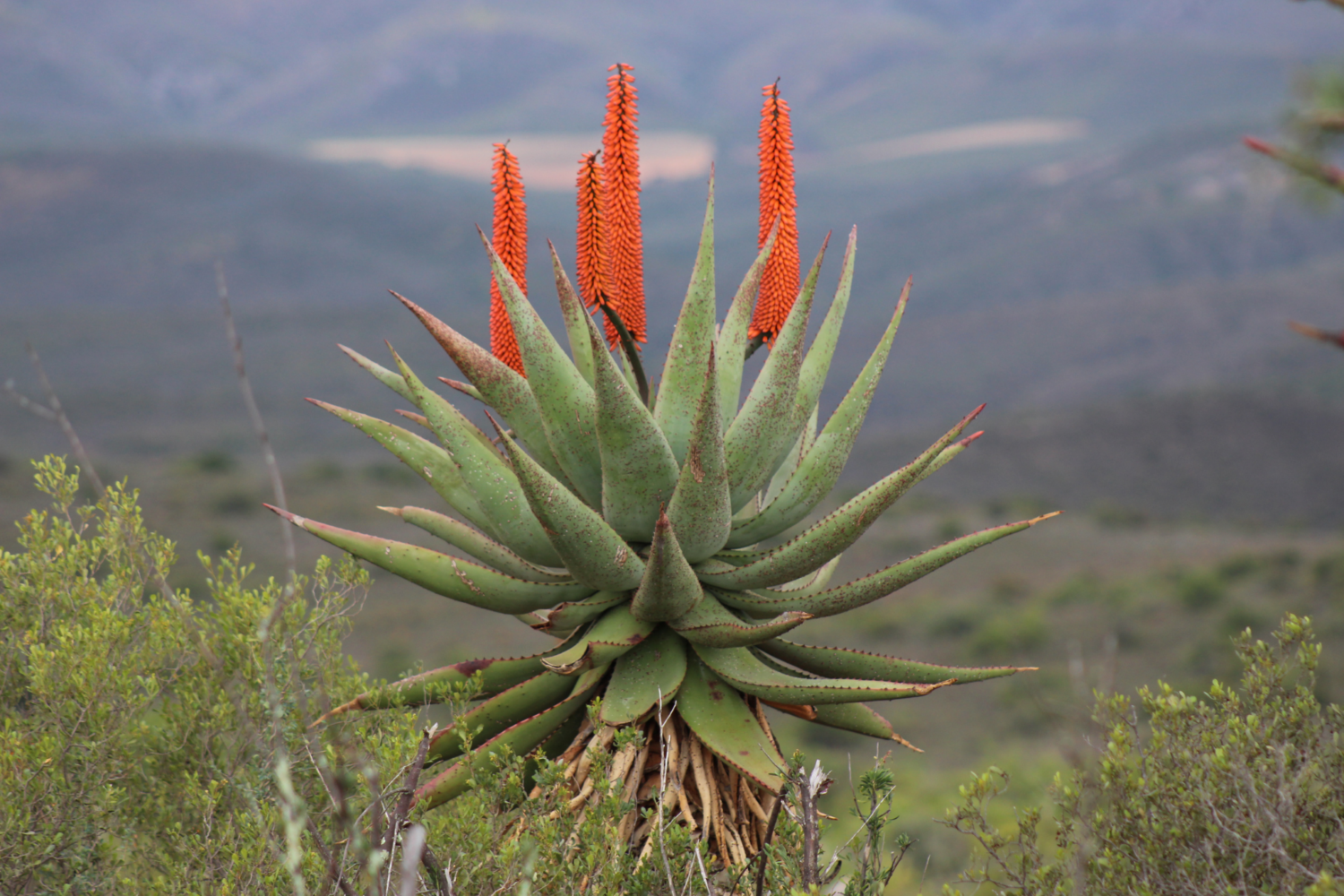
Aloe ferox is a fynbos plant that has traditionally been used by the Khoisan people for medicinal purposes.
Sustainable Consumption and Harvesting of Medicinal Plants
With the many benefits of herbal medicine, it’s no wonder that medicinal plants are gaining popularity in today’s markets. However, the growing consumption of these plants has added pressure on our natural environment, as well as the local and indigenous communities who rely on these plants.
“According to the International Union for Conservation of Nature and the World Wildlife Fund, there are between 50,000 and 80,000 plant species used for medicinal purposes worldwide. Among these, about 15,000 species are threatened with extinction from overharvesting and habitat destruction and 20 % of their wild resources have already been nearly exhausted with the increasing human population and plant consumption.” Bark stripping is one example of a harvesting practice that threatens certain tree populations. To learn more about the environmental impacts of bark stripping, check out our blog post about it here: https://greenpop.org/what-is-bark-stripping/.
In our interconnected world, nature has the power to heal our bodies just as we have the power to heal the planet. We can use herbal medicine while ensuring their ability to thrive in their natural environments through sustainable practices. Here are a few sustainability tips and solutions that benefit both the Earth and our bodies:
- Try and legally collect a small amount of medicinal plants from different areas rather than one specific place to avoid overharvesting. Make sure to collect legally and not in a protected area like Table Mountain.
- Purchase products with ethically-sourced ingredients and do your research as far as possible, about where the natural ingredients have been sourced.
- Harvesting plants that are already abundant in your area reduces the impacts on certain plant populations.
- Legally sourcing locally grown and domestic herbs help reduce carbon footprint.
The practice of herbalism offers us diverse ways to connect with nature. Our natural environment provides us the tools we need to heal ourselves. Perhaps the remedy to your ailments is right underneath your nose!
Greenpop’s Innovative Restoration Methodology and the Uilenkraal Forest Restoration Project
Read more about Greenpop’s innovative restoration methodology and the Uilenkraal Forest Restoration Project.
.
From Fires to Flora: A Blueprint for Wildfire Resilience and Forest Restoration
Read more about the Garden Route Wildfires and how Greenpop helped restore the forest of Heartland, forging a more fire-ready ecosystem.
Beyond Trees: Restoring Biodiversity & Protecting the Endangered Cape Parrot
Beyond Trees: Restoring Biodiversity & Protecting the Endangered Cape Parrot11 SEPTEMBER, 2025Forests are vital to the health of our planet, but not all forests are created equal. As a report by the IUCN and Greenpop explains, "Primary forests store more carbon...
Greenpop Foundation NPC is a registered non-profit organisation. Registration Number (NPO): 151-411 NPO.
